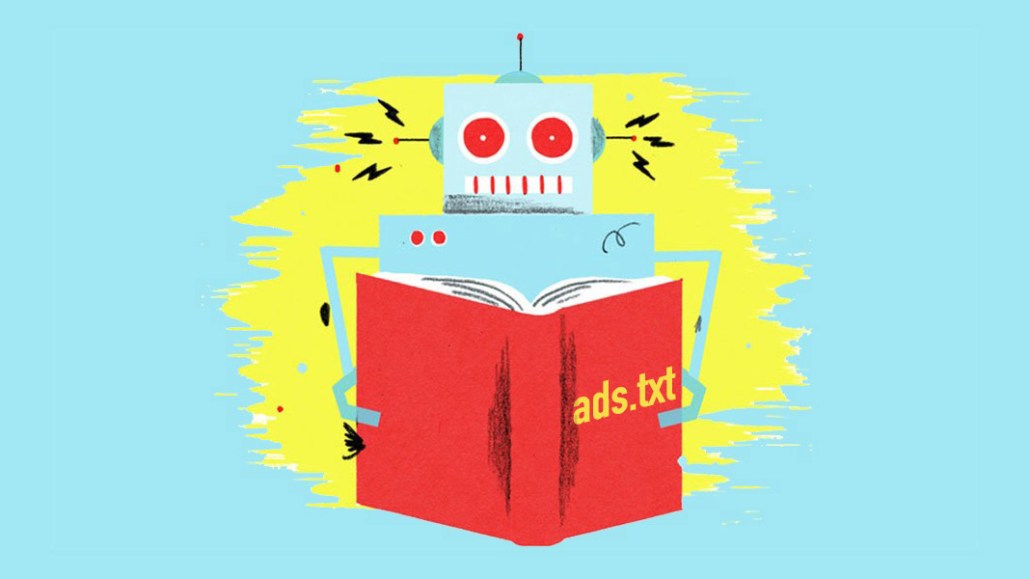Save 50% on a 3-month Digiday+ membership. Ends Dec 5.

This article is a WTF explainer, in which we break down media and marketing’s most confusing terms. More from the series →
Bid shading (no not bid caching) is a term that’s cropping up a lot more due to the shift from second-price to first-price auctions used in programmatic advertising.
As with anything in programmatic advertising, it’s worth keeping an eye on the lingo in order to stay on top of any changes. Here’s a primer:
So WTF is bid shading?
In programmatic advertising, there are two main types of auction: first-price and second-price. In a first-price auction, the highest bidder determines how much an impression gets sold for. In a second-price auction, the second-highest bidder determines the sale price of an impression. So in a second-price auction, if two buyers bid $10 and $15, respectively, the buyer who bid $15 will win but will only pay $10.01. Bid shading has cropped up as a compromise between the two. So the buyer will pay something in between what the second-price and the first-price value would have been, based on a calculation made by the ad tech partner.
How does it work?
The tech is predominantly available in supply-side platforms as a free service and is becoming a feature increasingly used in DSPs because of the shift toward first-price auctions. The vendor will analyze bid-history information, such as what bid rates typically win on a certain website, or in a certain ad position, or at what price bids are lost, for example, to calculate what a bid should be that is somewhere in between what the first and second bids would be.
Why has it come about?
Bid shading has been developed as a sweetener for buyers who weren’t too happy about suddenly having to pay far higher prices than they were accustomed to when first-price auctions gained traction. “This is a product to soften the blow for buyers, especially DSPs, which aren’t yet configured to operate in a first-price world,” said Matt McIntyre, head of programmatic for Europe, Middle East and Africa, at Group M agency Essence. “It’s very important for buyers to know what bid shading is. It reduces the risk of us overpaying [for impressions] in a first-price world.”
Do publishers gain from it?
It’s more a useful toolkit for buyers than publishers, but given the mid-range price is still likely to be significantly higher than what would have cleared in the second-price auction, publishers should in theory still get a good payout.
Do buyers pay extra for it?
They haven’t until now, though that may be changing. Google has its own version, as do other independent vendors albeit packaged and branded differently. There are now signs that certain vendors will start charging buyers a fee if they want to use bid shading. That’s not something all buyers are happy about.
Ad position: web_incontent_pos1
Any down sides?
It’s not particularly transparent, so buyers will have to rely on whatever the vendor has said is the right price. “There is very little accountability in terms of us being able to audit whether they [SSP] have extracted as much value as possible,” said McIyntre. “It looks like they’re saving you money, but how can you prove it? It may be easier for the DSPs to show the maths of how they’ve got there, but an SSP can’t show buyers that.”
Why is this happening at SSP and not DSP level?
Not all DSPs could switch to a first-price algorithm overnight, according to Paul Gubbins, head of programmatic at News UK-owned video marketplace Unruly. “We have spent the last 10 years of programmatic buying and selling where second-price auctions were the norm, so DSPs won’t just be able to transition if a buyer flips the switch and asks for the DSP to bid into an auction that is clearing on the highest first price. I envisage many SSPs offering these services until DSPs are fully equipped to flip in real time between first- and second-price auctions without exposing their buyers to unnecessary costs and inefficiencies.”
More in Media

What publishers are wishing for this holiday season: End AI scraping and determine AI-powered audience value
Publishers want a fair, structured, regulated AI environment and they also want to define what the next decade of audience metrics looks like.

Digiday+ Research Subscription Index 2025: Subscription strategies from Bloomberg, The New York Times, Vox and others
Digiday’s third annual Subscription Index examines and measures publishers’ subscription strategies to identify common approaches and key tactics among Bloomberg, The New York Times, Vox and others.

From lawsuits to lobbying: How publishers are fighting AI
We may be closing out 2025, but publishers aren’t retreating from the battle of AI search — some are escalating it, and they expect the fight to stretch deep into 2026.
Ad position: web_bfu




